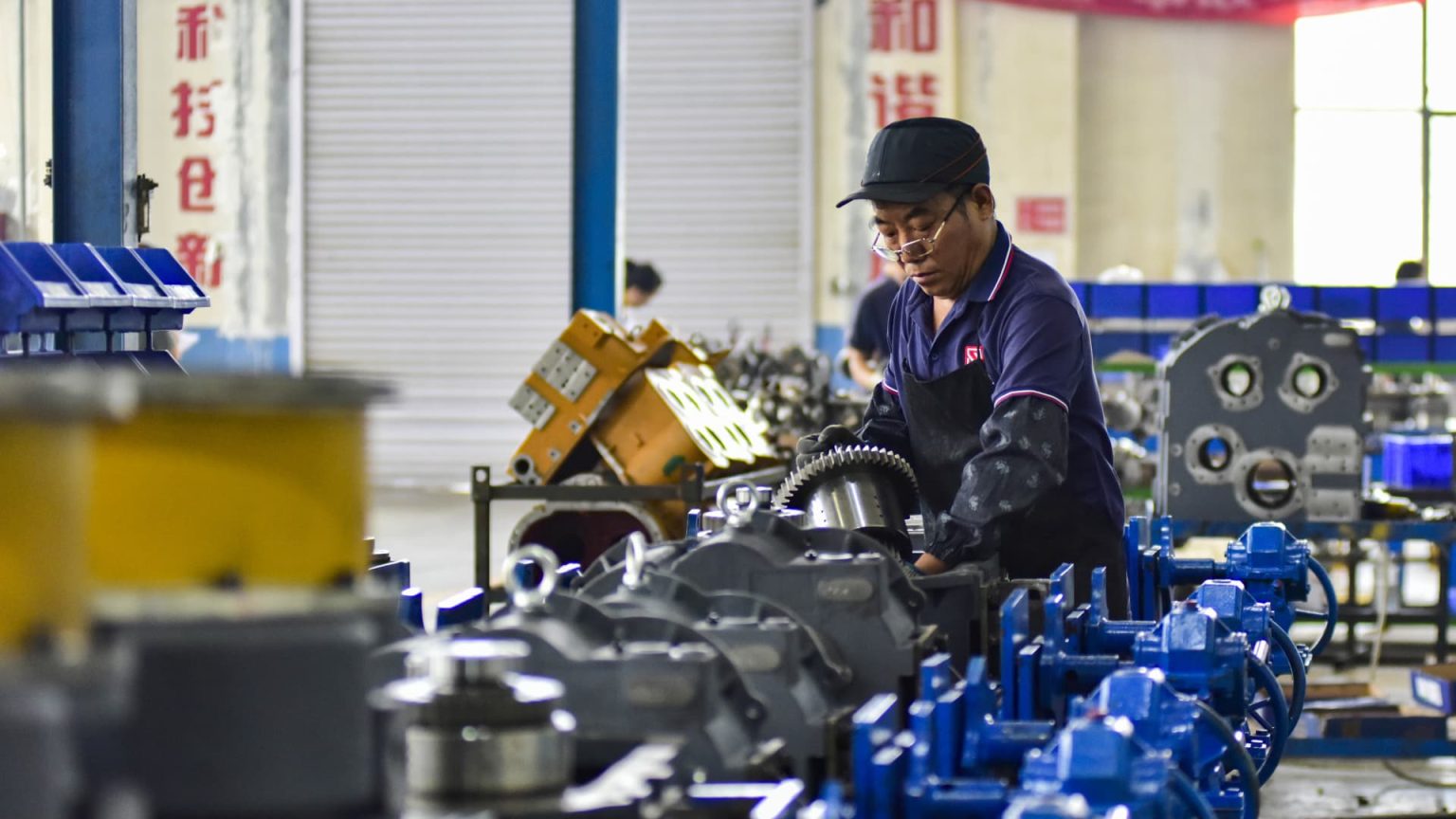China’s factory activity continued to contract for the fifth consecutive month in September, with the official manufacturing purchasing managers’ index coming in at 49.8. This data, released by the National Bureau of Statistics, indicates a slight improvement compared to the previous months. However, the Caixin PMI, a private survey compiled by S&P Global, reported a sharper contraction at 49.3 in September, reflecting declining demand and a weakening labor market. The manufacturing sector in China is facing headwinds from a prolonged economic slowdown, a property crisis, and export restrictions imposed by Western countries.
The Chinese government has been making efforts to support the country’s economic growth amidst these challenges. The People’s Bank of China recently cut the reserve requirement ratio and lowered the seven-day reverse repurchase rate in an attempt to stimulate the economy. Additionally, Chinese leaders, including President Xi Jinping, have emphasized the need for stronger fiscal and monetary policy support to address the issues facing the manufacturing sector and the overall economy. These measures have been met with positive responses in the Chinese equity markets, with markets experiencing their best week in almost 16 years following the announcements.
Despite these efforts, China’s economic indicators paint a concerning picture. Industrial profits in August plummeted by 17.8% year-on-year, marking the largest decline in over a year. Retail sales, industrial production, and urban investment all grew at a slower pace than expected, further highlighting the challenges faced by the Chinese economy. The restrictions on Chinese exports, particularly in sectors like electric vehicles, have also added to the concerns surrounding the manufacturing sector’s prospects.
The contraction in China’s manufacturing sector is indicative of broader economic challenges facing the country. Weak domestic demand, a slowdown in the housing sector, and rising unemployment are contributing to the difficulties faced by Chinese industries. The recent economic data, including the disappointing PMI readings and industrial profit declines, underscore the need for comprehensive policy measures to address these issues and support the country’s economic recovery.
The Chinese government’s response to these challenges, such as the recent rate cuts and policy support, reflects a proactive approach to managing the economic slowdown. By focusing on stimulating demand, addressing the property market decline, and providing strong fiscal and monetary support, China aims to mitigate the impact of external and internal pressures on its economy. The rallying of Chinese equity markets following the government’s announcements suggests optimism around the effectiveness of these measures in supporting economic growth and stabilizing the manufacturing sector.
As China continues to navigate through these economic challenges, the focus remains on implementing effective policy measures to revive growth momentum and address the underlying structural issues impacting the economy. By prioritizing support for key sectors like manufacturing, the Chinese government aims to bolster domestic demand, attract investments, and ensure a sustainable economic recovery. The coming months will be crucial in determining the success of these efforts and the trajectory of China’s economic recovery in the face of ongoing global uncertainties.


